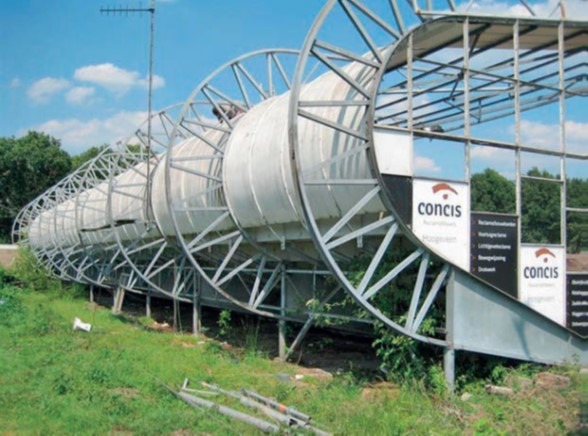Reuse of hot-dip galvanized steel
Elascon stands can still be seen in football stadiums today. The round shape of the rear wall, which flows seamlessly into the roof, and the fine steel tube construction give the stands an elegant appearance and recognition.
As the steel structures of the Elascon stands are hot-dip galvanised and bolted together, they are very durable and can be dismantled without damage. Harry Haverkotte, a former board member of Dutch football club SV Gramsbergen, remembered these features when he heard that a neighbouring club was moving into a new sports complex. He simply bought the club’s old 1976 stand for 7,000 euros, including the cost of dismantling it.
It took two years to renovate the grandstand and today it shines in its new splendour. As part of the overhaul, the old seats were replaced with new ones and the inside of the roof was painted with a decorative varnish. The bolts and nuts of the grandstand were replaced with new ones. The rest of the grandstand could be reused. The hot-dip galvanized steel structure was in excellent condition as the most important element of the grandstand after more than 40 years of use, so re-galvanizing the steel structure was not necessary. Zinc coating thicknesses of more than 100 micrometres were measured. The zinc coating will ensure that the steel structure will be protected from corrosion for many decades to come.
The example of the Elascon grandstand shows that the reuse of structural elements and long-life structures contributes significantly to reducing resource consumption and preventing pollution from new production. However, the example of the Elascon Grandstand also shows that reuse also makes economic sense. The cost of purchasing, dismantling, repairing and re-building the grandstand was €35,000. A new stand of comparable size would have cost more than EUR 200,000.

